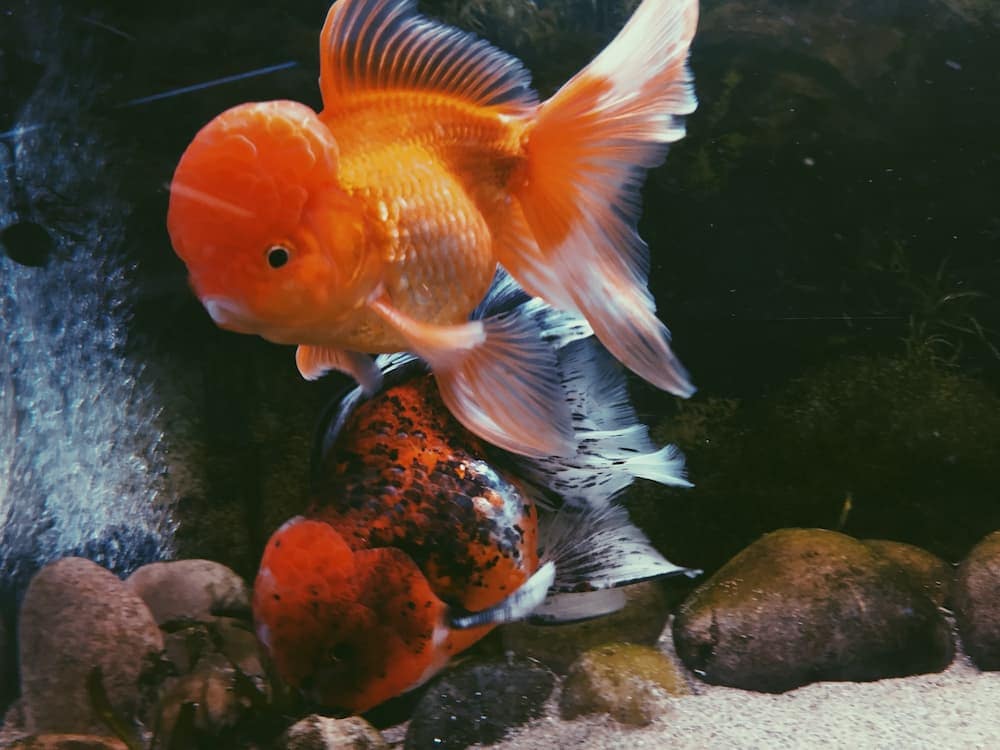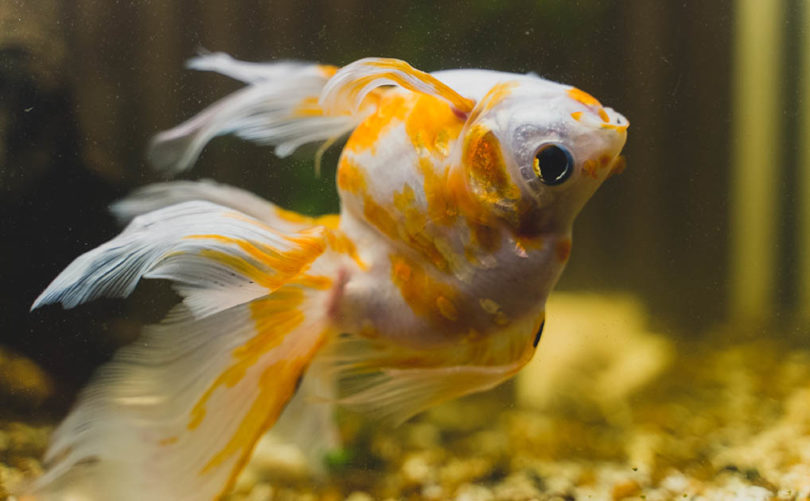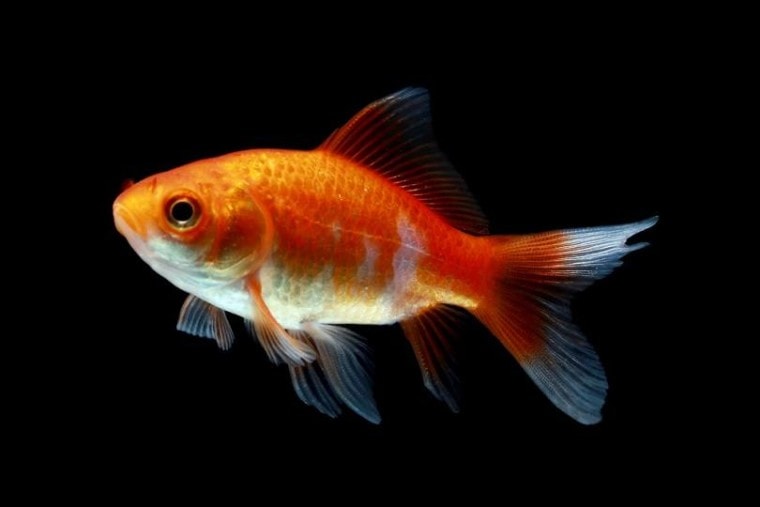
Goldfish are common choices for aquariums because they are visually pleasing, easy to maintain, and agreeable around other fish. When you pick goldfish, you open up a whole range of possibilities. It might surprise you that there are over 200 different goldfish breeds, all with different charm and appeal.
So, if you’re looking for a few goldfish buddies to add to an existing aquarium or you are starting from scratch, the petite Comet Goldfish should be at the top of your list. Let’s learn all about this little swimmer.
Quick Facts About Comet Goldfish
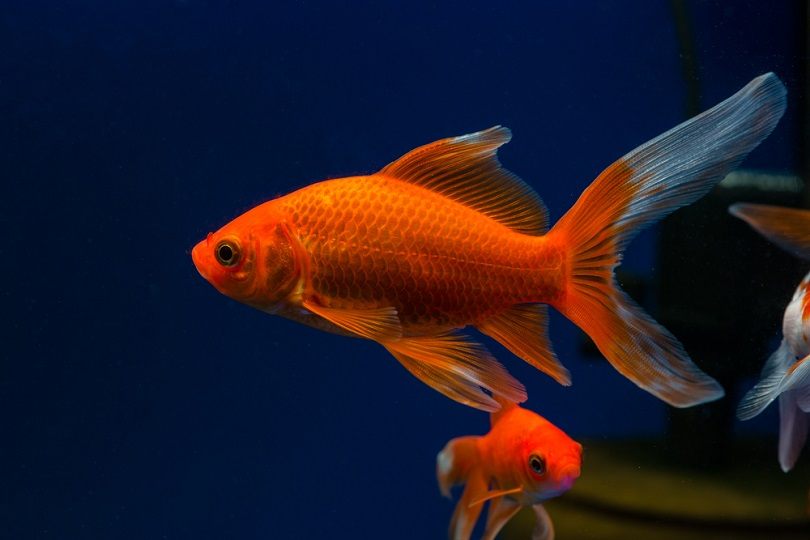
| Species Name: | Carassius auratus |
| Family: | Cyprinidae |
| Care Level: | Easy |
| Temperature: | 65°–72° Fahrenheit |
| Temperament: | Social |
| Color Form: | Yellow, orange, white, red |
| Lifespan: | 5–14 years |
| Size: | 4–12 inches |
| Diet: | Omnivore |
| Minimum Tank Size: | 50 gallons |
| Tank Set-Up: | Freshwater |
| Compatibility: | Other fish that can’t fit in a Comet’s mouth and can handle lower water temperatures |
Comet Goldfish Overview
The Comet Goldfish is an attractive little fish with a single fork-shaped tailfin, unlike many of its cousins. Because of the unique tail, they were named after a comet in space. They aren’t as large as others, either—but they can get up to roughly 12 inches.
Many people love the simplicity of owning Comet Goldfish. They are very easy to care for and look awesome swimming around. There can be some issues with pairing tank mates since Comets like a bit of a cooler temperature.
But there are still several fish that work well alongside the Comet. Comet Goldfish do very well in ponds where they can explore the space. For being such little fish, they sure do love having tons of room to swim—the more, the better.
These beauties are also interesting to watch since they are so interactive and alert. They will add character to your pond or aquarium—permitting that living conditions are compatible.
Let’s get down to brass tacks.
How Much Do Comet Goldfish Cost?
Comet Goldfish are commonly used as feeder fish because of their size, so their price reflects that. Most Comet Goldfish are under a dollar per fish—many ranging from $0.20 to $0.50.
You can afford to fill your tank with quite a few Comet Goldfish but be careful about pairing them with fish that are much bigger. Bigger fish can easily view Comets as prey, swallowing them up.
In the same sense, a Comet might mistake existing thank creatures for snacks, too. It goes both ways. So, before you buy several little Comets, ask yourself if your existing fish will be accepted so you don’t waste money or risk aquarium lives.
Typical Behavior & Temperament
Comet Goldfish are active, friendly, and social fish. They are small, but they love darting around the aquarium from corner to corner, sometimes as fast as they can go. You’ll need a tank big enough to accommodate their high energy and big personalities.
Apart from their speediness and playful nature, they are all very neutral and peaceful. They can coexist just fine among others without exhibiting aggression or territorial behavior.
They can even recognize you and play with you through the aquarium glass by following your finger or darting behind a plant to play hide-n-seek. They are very interactive, both with other creatures and humans—most of the time.
Even though they blend very well temperamentally, their living conditions are usually what makes them incompatible with other fish—not their nature.
- Related Read: Ryukin Goldfish
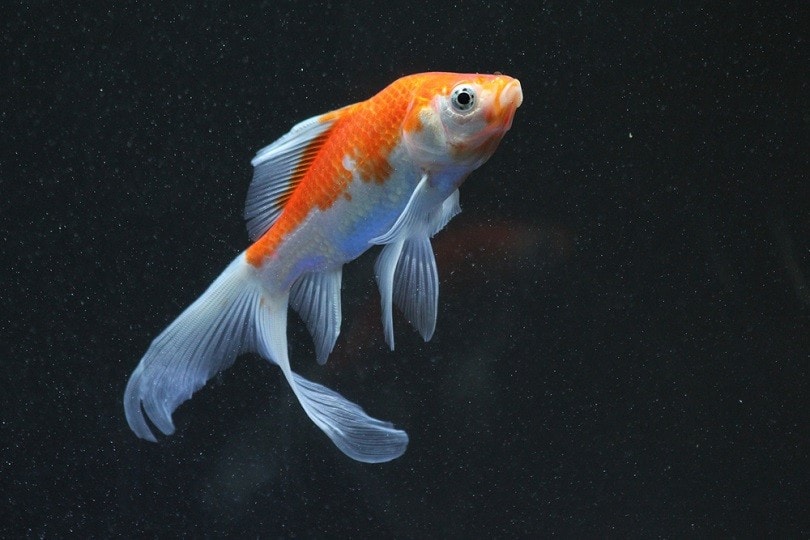
Appearance & Varieties
Comet Goldfish don’t get nearly as big as some other goldfish varieties and they have their own look, too. They have many similar colors and patterns to their goldfish cousins, but their overall body and fin shape differ quite a lot.
How to Take Care of Comet Goldfish
Habitat, Tank Conditions & Setup

Are Comet Goldfish Good Tank Mates?
This is a loaded question because temperamentally, Comets are excellent—therefore compatible with a wide range of fish. But they prefer much colder water temperatures than most, so living together isn’t really in the cards sometimes.
Also, because of their smaller size, you need to be cautious about who else is in the aquarium. Some fish can mistake these tiny guys for food. Alternatively, they’re pretty voracious eaters who won’t mind making a snack of the small tank snail sluggishly sliding around.
But that doesn’t mean you can’t get some friends for your comet buddies.
What to Feed Your Comet Goldfish
Comet Goldfish can eat a variety of fresh foods as well as manufactured fish food flakes. Flakes and pellets have all of the nutrition that your comet needs included in the recipe, so this can work as an everyday diet.
But also make sure to give your comet a variety of fresh, cooked, or dehydrated food. You can also feed them nutritious gut-filled insects like earthworms, bloodworms, and larvae. They won’t hesitate to gobble up live food snacks.
Many goldfish die as a result of improper feeding, diet, and/or portion sizes – which can be easily prevented by proper education. That's why we recommend the best-selling book, The Truth About Goldfish, which covers everything about goldfish nutrition, tank maintenance, illnesses & more! Check it out on Amazon today.
If you have live plants in your aquarium, these fish will love feasting on algae and plant matter, too.
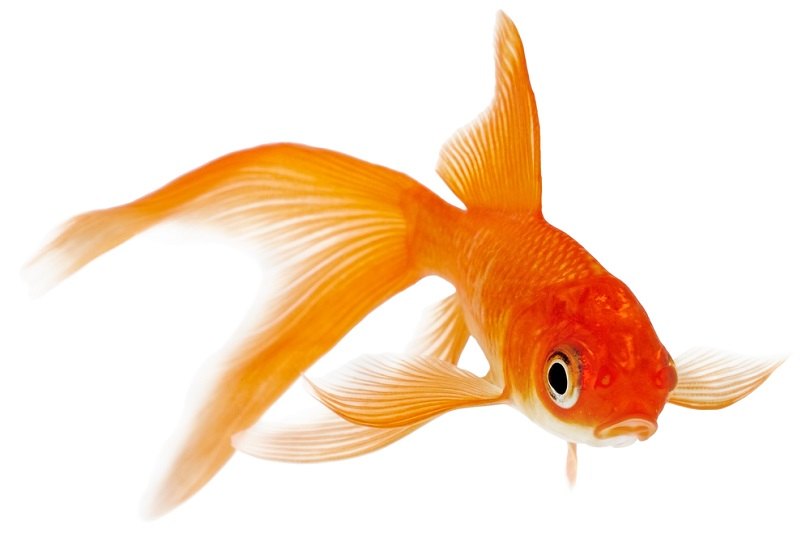
Keeping Your Comet Goldfish Healthy
Little Comet Goldfish are quite hardy fish that stay healthy easily—in the right conditions, of course.
Breeding
Breeding the Comet Goldfish in a tank setting is not an easy feat to accomplish. You have to have extremely specific environmental factors for successful hatching. Breeding these goldfish are much more likely to be successful in ponds where nature takes its course.
But if you decide to try a tank, Comets require a trigger to start breeding, which usually involves a temperature drop to 58° Fahrenheit and only 8 hours of light for a month.
To prepare for healthy breeding, make sure to offer them a substantial diet to make up for the energy impact on their bodies. Include live foods, frozen foods, and standard flakes and pellets so they maintain a well-rounded diet.
Once the month has passed, slowly raise the temperature back up to roughly 70° Fahrenheit. You must do this slowly, otherwise, you can stun or kill your fish. Also, increase the light back up to 12 hours per day.
Once the conditions are right, males should start to encourage the females to lay eggs. They can lay up to 1,000+ eggs at a time, at which point the male fertilizes them. You have to remove both parents until the eggs hatch between 24 and 48 hours later.
Conclusion
If you have other compatible fish, or you’re just creating your set-up, Comet Goldfish can be very rewarding to keep. They are even-keeled, active little fish that can keep you entertained with their fast pace and alert personalities.
But, the Comet won’t be for everyone. They don’t always work in every aquarium and might not be the best additions to many circumstances. Conduct thorough research to find out if these little guys are compatible with your tank.
Featured image credit: agus fitriyanto suratno, Shutterstock






